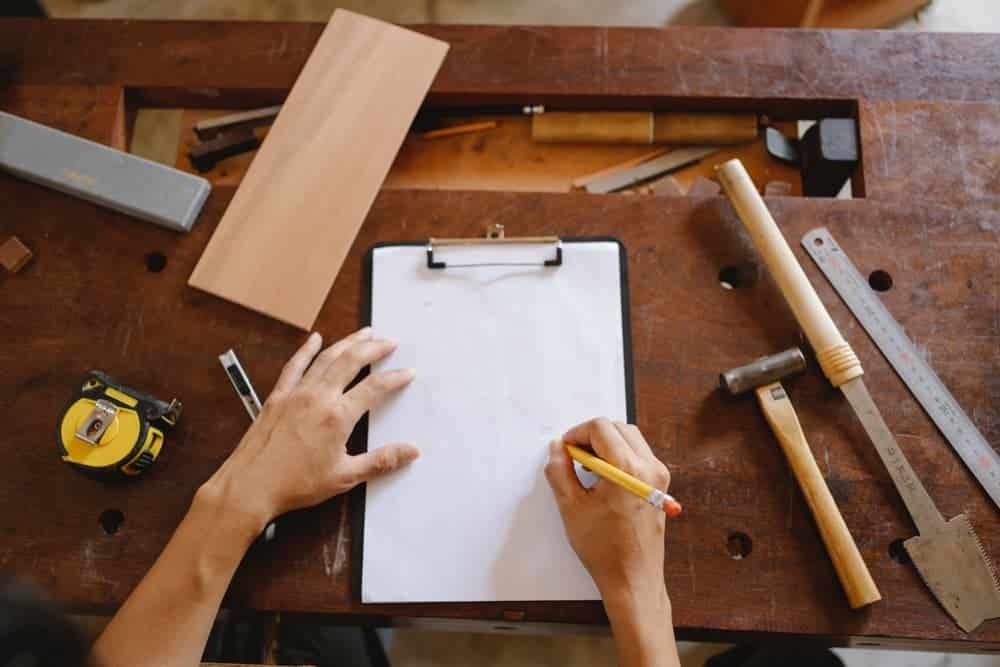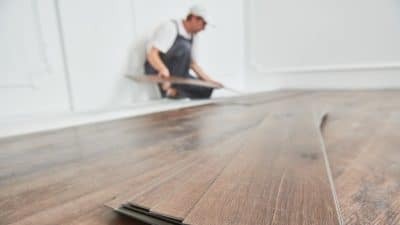
Designing woodworking projects that are both functional and aesthetically pleasing is pure art and also the ultimate goal. But you need to be highly skilled and careful while planning and paying attention to details to craft woodworking projects that are not only useful but also look good. Each part is important to the end result, from planning and choosing the wood to assembly methods and finishing.
Whether you’ve been working with wood for a long time or are just starting out, this article will help you improve your woodworking skills and make projects that stand out. So, stay tuned till the end to master the art of woodworking with our pro tips.
Pro Tip 1: Plan and Visualize
The first step in making a successful wooden project is to plan it out and try to imagine how it will turn out. Spend some time sketching up your concepts and giving serious consideration to the project’s end aim, scope, and intended purpose. Using visualization, you can see potential design flaws and offer your project a more focused direction. And before you buy woodworking wood, you have to consider the style, overall feel, and special design touches carefully to choose the right wood.
Think about how the project will be used and what its users want. Questions like, “Is it going to be used as a place to eat, sit, or store things?” can help you find the purpose of the woodworking project. Think about where you want to go and if there are any requirements or limits. Moreover, planning and picturing your project before you start will help you a lot during the building stages.
Pro Tip 2: Choose the Right Wood
The choice of wood has a crucial role in the creation of functional and aesthetically pleasing objects. The grain patterns, colors, densities, and ease of working with various species of wood are only a few examples. When choosing wood for your job, think about the following:
● Durability: Choose wood species that are strong and durable for the job. Durable hardwoods like oak, maple, and walnut are preferred.
● Grain Pattern: A project might look better with wood grain. Also, you should select a wood species based on the desired appearance. Mahogany and cherry feature some interesting grain patterns.
● Color: Wood colors vary. Choose a wood species that complements the design plan of the home, where wood and natural light triumph.
● Workability: How quickly woods can be molded, cut, and joined varies. Ebony and rosewood are harder to work with than pine or cedar. That’s why you need to choose a wood species according to your expertise and tools.
It’s also important to consider sustainability and the environmental impact of your wood choice. Look for responsibly sourced or reclaimed wood to minimize your ecological footprint. You can also check out how barnwood adds character to your home’s interior to get a clearer picture.
Pro Tip 3: Focus on Functionality
While aesthetics are important, it is crucial to prioritize the functionality of your woodworking projects. Even the most visually stunning piece will fall short if it doesn’t serve its intended purpose efficiently. Here are some tips to ensure the functionality of your designs:
1. Dimensions: Determine project dimensions based on the space. To fit perfectly, pay attention to height, breadth, and depth.
2. Ergonomics: Prioritize ergonomics for furniture and other human-use objects. Design for comfort and usability.
3. Storage and Accessibility: Consider access and use when designing storage compartments or drawers. Handles, hinges, and slides make storage areas useful and accessible.
4. Practicality: Consider project logistics. Is frequent maintenance needed? What are the safety concerns? Consider these aspects while designing.
By focusing on functionality, you can ensure that your woodworking projects not only look great but also serve their intended purpose effectively.
Pro Tip 4: Pay Attention to Proportions
Proportions are a fundamental aspect of creating aesthetically pleasing woodworking projects. Proper proportions create a sense of harmony and balance in the design. Here are some tips for achieving pleasing proportions:
1. Component-to-Component Ratio: Pay attention to how the parts of your project, like the legs, handles, panels, and supports, fit together.
Check if their proportions are appropriate and that they enhance the whole.
2. Project Size: Consider the scale of your project in relation to its surroundings. A mismatched size or proportion might ruin the overall effect. It’s important to strike a balance between the scale of the project, its intended function, and its physical location.
3. Negative Space: “Negative space,” the empty places surrounding your design, is equally as significant as the components themselves. Space out your project enough to offer it visual breathing room and a feeling of equilibrium.
4. Golden Ratio: The golden ratio is a mathematical concept that has been used for centuries in aesthetics. The golden ratio is a helpful rule of thumb for creating balanced visuals.
Keep in mind that proportion is a matter of taste and might change based on the style you’re using. Use your judgment and get input from others, especially from the users to make sure your ideas are on point.
Pro Tip 5: Incorporate Joinery Techniques
Strong and well-executed joinery techniques not only enhance the durability and longevity of your woodworking projects but also add visual interest. Here are some popular joinery techniques to consider:
1. Dovetails: Dovetail joints are durable and attractive. They connect wood with interlocking tails and pins. Furniture and drawers employ dovetails.
2. Mortise and Tenon: Woodworkers use mortise-and-tenon joints, projecting tenons fit into mortises. Table legs, chair frames, and cabinets use this strong, stable connection.
3. Box Joints: Box joints—also known as finger joints—join two perpendicular wood pieces. Fingers cut into the ends interlock to make them. Boxes, drawer dividers, and ornamental joinery use box joints.
4. Lap Joints: Screws, nails, or glue link two wood pieces in lap joints. They are easy to make and are utilized in frame, shelf, and panel installation.
Experiment with different joinery techniques to add structural integrity and visual appeal to your projects. Consider the strength requirements, aesthetics, and skill level required for each technique, and choose the one that best suits your design.
Pro Tip 6. Consider Grain Direction
The direction of the wood grain can significantly impact the visual appeal and structural integrity of your woodworking projects. Paying attention to grain direction allows you to showcase or hide grain patterns to achieve the desired artistic effect. Here are some considerations:
Grain Alignment
Think about how the grain lines up between the different parts of your project. For instance, lining up the lines on table tops or closet doors can make the room look nice and put together. On the other hand, mismatching the direction of the grain can add a bit of uniqueness and visual interest.
Grain Orientation
The direction of the wood grain affects how stable the wood is and how it moves. Consider switching the grain direction when building table tops and panels to reduce buckling and swelling, and shrinking caused by changes in humidity. This method, which is called “breadboard ends,” helps keep the project flat and stable.
Grain Matching
Make sure the grain runs in the same direction when joining many pieces of wood for a project. Make the wood appear as if it belongs together by coordinating the grain patterns and colors. This process is often used to construct shelving, doors, and storage containers.
Hidden Grain
The wood grain can also be concealed in order to get a more uniform appearance. You can hide the wood grain and create a uniform, smooth surface by applying veneers or laminates.
Woodworking products’ aesthetic impact and durability can be improved by paying close attention to the direction and orientation of the wood grain.
Pro Tip 7: Experiment With Finishes
The finish you pick for your woodworking projects will do double duty by both highlighting the wood’s beauty and protecting it. You can get the ideal appearance and make sure it lasts by experimenting with various finishes. Let us have a look at some of the common types of finishes.
Stains
The wood texture shows through stains. They can enhance or conceal the wood’s natural colors. Try several colors on scrap wood to see how they work with your wood.
Oils
Tung and Danish oils absorb the wood and give it a natural, low-sheen finish. They preserve and enhance the grain. Oils are used to create natural, subtle effects.
Varnishes and Lacquers
Varnishes and lacquers sparkle and endure. They repel water, heat, and scrapes. These finishes are used on furniture and other heavy-use items.
Wax
Wax-finished wood shines warmly. They fit well and are simple to clean. Wax treatments are usually used on creative or non-durable items.
Consider the project’s purpose, appearance, and safety before choosing a finish. Try a finish on scrap wood first to see how it performs with your wood.
Pro Tip 8: Embrace Simplicity
Simple woodworking projects can be magnificent. Avoid cluttering your design. Keep the design simple to highlight the wood’s inherent beauty. Simple lines, minimalistic detailing, and well-executed joinery can produce an elegant design.
Focus on the project’s essentials and remove extras. Consider negative space and design balance. A well-executed basic design may frequently have a greater effect than a complicated one.
Simple does not imply ineffectiveness. Simple woodworking projects last and look elegant.
Pro Tip 9: Repeat and Refine
Make adjustments as needed, test prototypes, get feedback, and assess the design at various phases. This technique lets you find and fix design faults and improve project functionality and attractiveness. Check dimensions, joinery, and design to make sure they match your idea. Small changes during design and production can enhance the final product.
Pro Tip 10: Learn From Others
In order to build your own style and hone your woodworking talents, it is essential to learn from professional woodworkers and study design concepts. Woodworkers can find motivation and new skills by looking at the works of famous woodworkers, taking workshops or courses, and participating in online forums. You can increase your design vocabulary and integrate new ideas into your work by reading widely and learning from the experiences of others.
Conclusion
Woodworking projects that are both useful and nice to look at take a mix of imagination, skill, creativity, and attention to detail. By following the above guides and tips and practicing patiently, you can improve your woodworking skills and craft outstanding pieces that serve their purposes. As a result, you will be able to leave a lasting impression on your clients.








